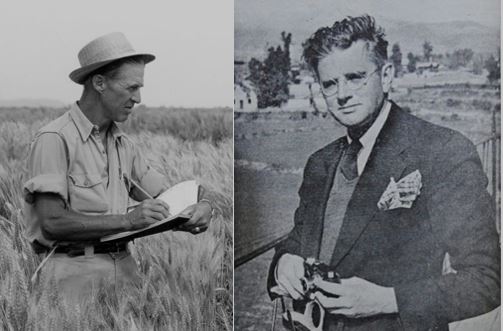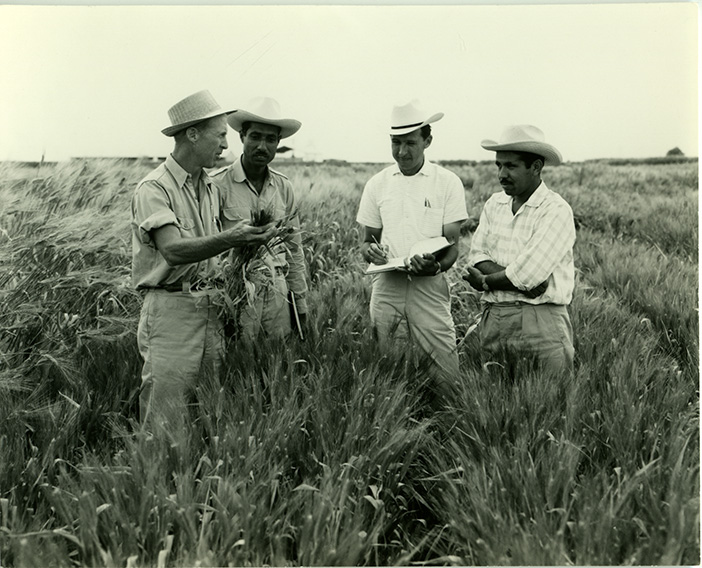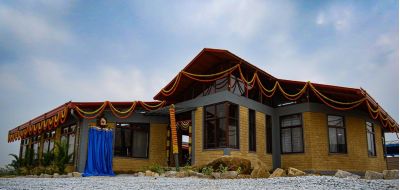Are you a wizard or a prophet?

Charles Mann’s The Wizard and the Prophet released today seeks to reconcile two worldviews spurred by agronomist Norman Borlaug and ecologist William Vogt, to help us better understand how we can feed 10 billion people by 2050; without destroying our planet in the process.
Borlaug, the “wizard” of the book, launched his vision from a small parcel of “badly damaged land” near Mexico City that would become the International Maize and Wheat Improvement Center (CIMMYT). He was a key figure in developing high-yielding wheat varieties that saved millions from starvation in the 1960s, launching a global Green Revolution and becoming an emblem for “techno-optimism,” or the view that science and technology will meet humanity’s growing demands.
Vogt’s 1948 book “The Road to Survival” became the blueprint for today’s modern environmental movement, prophesizing that unless humankind drastically reduces consumption, its growing numbers and appetite will overwhelm the planet’s resources. His novels and speeches inspired conservationists from Rachel Carson to Paul Ehrlich, and defined our concept of “environment” as an entity that deserves respect and protection.
Mann uses the views of Borlaug and Vogt as endpoints on a “wizard-prophet” spectrum to illustrate different approaches experts are taking to solve four great, complex challenges of our time: food, water, energy and climate change.
But who is right? We, humans, are the only species on Earth that have been able to bend nature to our will. For thousands of years we burned forests to kill insects and encourage the growth of useful species, then later turned the planet into our “personal petri dish,” as Mann puts it, with the rise of agriculture and creation of crops like maize, which allowed Mesoamerican civilizations to grow and flourish. Today, violence and poverty are at an all-time low due to the wizardly-successes of Borlaug and others
However, Mann cautions past successes are no guarantee of the future. Vogt’s Malthusian predictions didn’t come to pass, but Borlaug’s wizardry also had unintended social and environmental consequences. Fertilizer runoff, over-extraction of groundwater and the burning of fossil fuels are creating an increasingly inhospitable planet and arguably pushing us closer to Vogt’s envisioned planetary limits than ever before.

Both Borlaug and Vogt identified as environmentalists trying to solve the same monumental challenge of having too many people to feed but not enough resources. Their ideological heirs are also working to solve equally challenging problems but are bitterly opposed, in large part because the argument is less about facts and more about values.
Prophets see humans as living in a finite world with constrained limits imposed by the environment, while wizards believe human ingenuity gives us an endless array of tools to manage the environment for our needs.
Mann doesn’t take either side, but rather offers solutions proposed by both prophets and wizards. He cites efforts to change the way photosynthesis works in rice at the International Rice Research Institute, but also initiatives like the domestication of wild perennial plants at the Land Institute. Both prophets and wizards have multiple, on-going efforts to meet all four challenges that Mann covers in the book. He says that it’s possible individual efforts won’t work, but the odds of all efforts failing are equally small.
Most importantly, there are many individuals and organizations today that are attempting to embrace both ideologies. CIMMYT, an organization that was founded by the original wizard, now incorporates sustainable agriculture practices into its work globally, with an emphasis on social inclusion.
The Wizard and the Prophet’s in-depth mix of biographical, historical, philosophical and scientific detail allows us to confront our wizard/prophet bias, and leaves one with a greater sense of respect for those with differing views on how we should shape our world in the 21st century.
